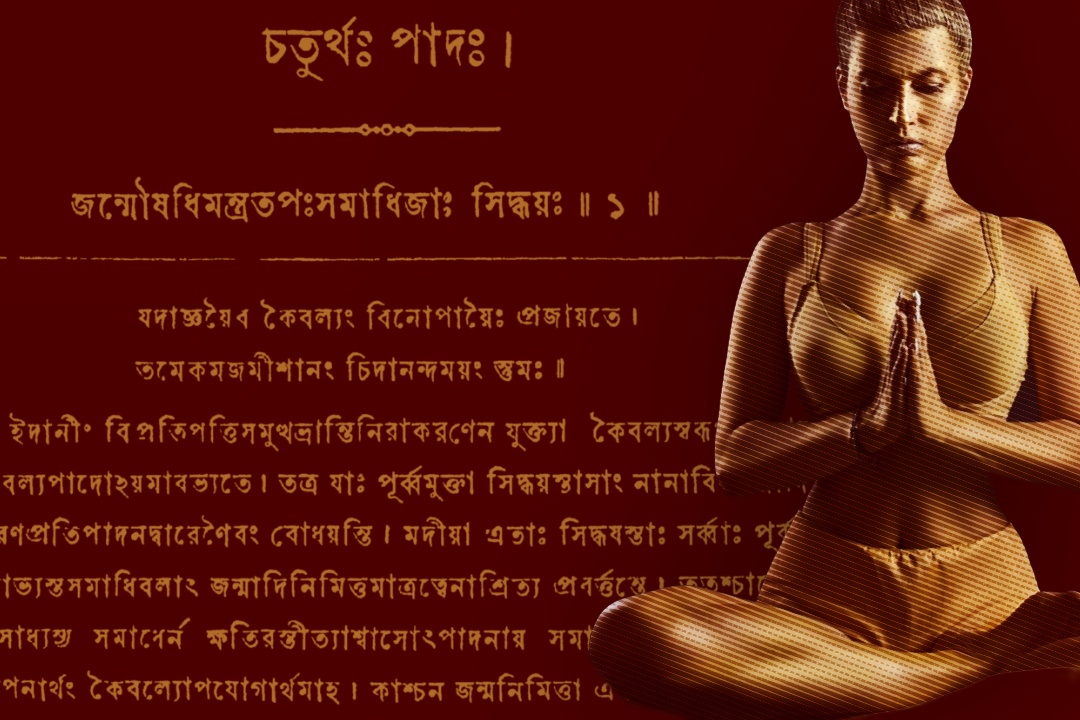Yoga Sutras

The Yoga Sutras of Patanjali is one of the most important, renown and revered texts in the world of yoga. Most students have been in a class where the yoga teacher mentions or quotes from it. It’s not hard to see why. This ancient text presents a systematic approach to life and living that has inspired people for thousands of years. They contain the essence of all yoga philosophy and these teachings are studied and practiced worldwide.
What are the Yoga Sutras?
This Sanskrit text is a collection or short verses or aphorisms known as “sutras” in Sanskrit. They serve as a map and step-by-step guide to cultivate wisdom, understand our true nature, and attain Self Realization through the practice of meditation. The Yoga Sutras are estimated to have been written between 500 B.C.E. and the third century. They are regarded by many as the basis of yoga philosophy and the foundation of the practice of yoga. Yoga Sutras are considered to be the foundational text of Raja Yoga.
How many yoga sutras are there?
There are 196 sutras which are divided into four chapters. Each chapter contains various topics such as meditation, breathing exercises, pranayama (breathing techniques), and other practices. The four chapters are:
- Samadhi Pada (51 sutras) — In the first chapter we learn Patanjali’s definition of Yoga and the types of Samadhi.
- Sadhana Pada (55 sutras) — The second chapter describes the practice of meditation, the Eight Limbs of Yoga and the five kleshas or obstacles to yoga.
- Vibhuti Pada (56 sutras) In the third chapter we learn of the benefits of mastering meditation, the siddhis or yogic magic powers and the practice of samyama—the combination of the last three limbs of yoga Dharana, Dhyana, and Samadhi.
- Kaivalya Pada ( 34 Sutras) The fourth chapter describes the concepts of Karma, Samskara, and the three gunas. Patanjlai ends the Yoga Sutras by explaining How to attain liberation and the freedom from suffering.
Why Are the Yoga Sutras Important to Your Yoga Practice?
Patanjali’s Yoga Sutras are dense, abstruse, and hard to understand. The text is open to interpretation by practitioners, but at its core the Yoga Sutras are meant to provide depth and practical advice to help yogis and Yoginis explore the central meaning behind yoga and Indian philosophy. They’ve become one of the most influential texts for modern yogis because they provide a framework for understanding the relationship between mind and body and offer practical advice on how to achieve balance and health in daily life.
The 8 Limbs of Yoga
In his Yoga Sutras, Patanjali outlines the eight limbs or steps of yoga. These are the practices and techniques to be practice to reach the ultimate goal of yoga—samadhi or enlightenment.
The eight limbs are:
- Yama — moral discipline
- Niyama — personal observances
- Asana — seated postures for meditation
- Pranayama — mindful breathing
- Pratyahara — sense withdrawal
- Dharana — mental concentration
- Dhyana — absorption or meditation
- Samadhi — enlightenment or bliss
The Yoga Sutras in Modern Yoga
The Yoga Sutras are applicable to modern yogis who want to make progress toward self realization. Beginner students and householder yogis may struggle to find practical or helpful information in the Yoga Sutras. However, intermediate and advanced students will find it helpful to study the Yoga Sutras and apply this essential yoga wisdom to their spiritual practice.
Learn how to incorporate the sutras into your daily life and yoga practice with articles exploring the various aspects and intricacies of this classic yogic text.










